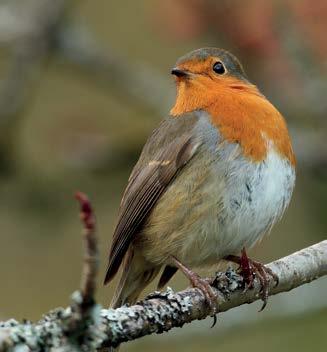Gardening with Wildlife
An organic gardening guide



Feed the soil to feed the plants – strong plants better withstand pests and diseases.
Encourage beneficial beasties – a small wildflower area can bolster your pest-eating army.
Leave the chemical pesticides in the shop – they kill both the good and bad insects, which can result in pests running amok in an unbalanced ecosystem.
Prevention is better than cure when it comes to pests – physical barriers can work wonders.
Practice crop rotation – this prevents the build-up of crop-specific pests in the soil.
A well-fed soil that has had plenty of organic matter added from season to season builds up a good soil structure and a natural balance of nutrients. Organic matter can be added in the form of compost, wellrotted manure or by adding fresh seaweed.
Even with a healthy, well-fed soil, many ‘hungry’ fruiting plants such as tomatoes and squash benefit from fortnightly feeding with liquid feeds – a somewhat smelly but effective way of feeding your garden.

You can make your own liquid feed by fermenting these plants in water, in a lidded container; the water leeches out the useful nutrients. Various plants, including weeds, can be used but two of the best are:
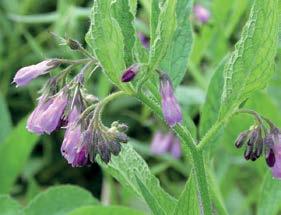
1kg comfrey in 15L of water, fermented for four weeks; no dilution needed before use. Comfrey is high in nitrogen, potassium, iron, calcium and phosphorus. Good for fruiting crops.
1kg nettles (young ones are best) in 10L of water for two weeks. Use it diluted 1 part nettle feed to 10 parts water. Nettles are high in nitrogen, with some magnesium, sulphur and iron. Good for vegetables. It also works well mixed with comfrey feed.
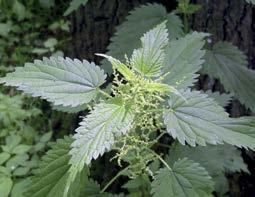
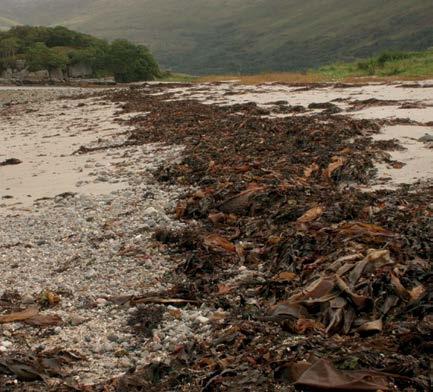
Contains more than 70 readily available minerals, vitamins and enzymes, which have the benefits of:
• Boosting growth and crop yields;
• Improving transplant survival and resistance to frost, diseases and stress conditions;
• Increasing the uptake of inorganic minerals;
• Improving soil structure and water retention;
• Improving fruit shelf-life after harvest and;
• Helping to deter pests and diseases on fruit, flowers, vegetables and lawns.
Gather dry, freshly stranded, seaweed from above the high tide line of beaches that aren’t Areas of Special Scientific Interest or have another conservation status. It is advisable to give it a good shake before bagging to dislodge as many of the minibeasts as possible.
Don’t harvest growing seaweed or seaweed affected by raw sewage, oil and other chemicals. Also avoid beaches with invasive species such as Japanese Knotweed and Giant Hogweed, as their seeds are often trapped in the seaweed.
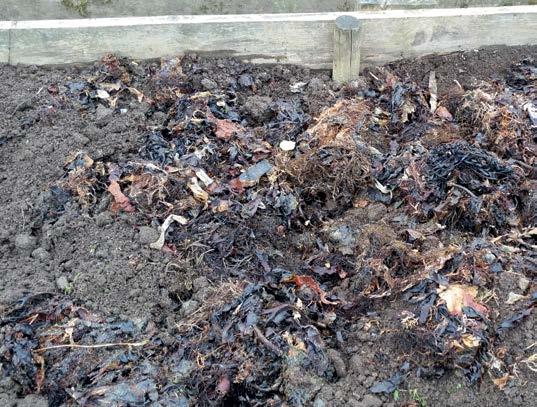
Layer it directly onto the soil as overwinter mulch, or arrange it around young plants, ensuring it isn’t touching the stems, as a mulch and slug deterrent.
Dig it in a few weeks before planting.
Soak it in water to make an extract. Stir it daily and start drawing off liquid after one week; dilute this to the colour of tea before using. Most plants benefit from liquid seaweed every two weeks or so, it can also be sprayed onto the leaves for rapid uptake and to deter pests.
A well-managed compost heap can create ‘black gold’ from kitchen and garden waste that will gently fertilise your plants and improve your overall soil health.
A compost heap can be made simply on a spare cubic metre of ground in dappled shade, from wooden pallets or wire fencing attached to four corner posts. Starting the heap directly on the ground allows useful beasties to access the pile, though you may want to put down chicken wire first to deter rodents.
There is a knack to creating a successful compost heap, but the steps below are a guide.
Create a layer, directly on the ground, roughly 30cm deep of woody material such as small branches and stems, for good air flow.
Add a balanced mix of green and brown material; there should be no more than 50% green material; use a range of different materials.
Include activators such as nettles or seaweed; if you don’t have either, you can try some topsoil, or buy organic activators from a garden centre.
Every time you add some green material, add some brown to keep a good mixture balance and create air pockets.
Shredded newspaper and cardboard, wood chips, dry leaves and straw.
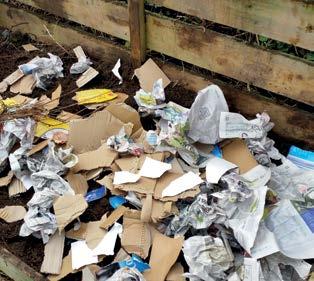
Kitchen waste, grass clippings, weeds, crushed egg shells, teabags and coffee grounds.
Leave out: meat, fish, dairy, cooked food, pet litter, nappies and perennial spreading weeds, such as creeping buttercup and bind weed.
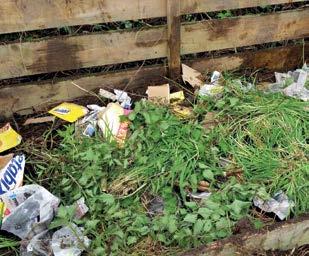
Add material regularly to ensure constant food supply and new insulation.
Turn the pile at least once a month, preferably every two weeks, to ensure all the materials are well mixed and aerated. Also, check to make sure the compost is slightly damp; if it’s too dry spray it with the hose to dampen it, if it’s too wet mix in more browns.
Compost is ready when it’s dark brown, crumbly and smells rich. In perfect conditions with regular turning it can take as little as two to four months, but usually, it’ll take six months to a year; especially if the brown ingredients aren’t shredded first.

If you have space, create a small wildflower area, filled with beneficial flowers and herbs to encourage useful insects into your garden. If space is limited try companion planting in your beds.
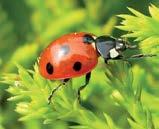
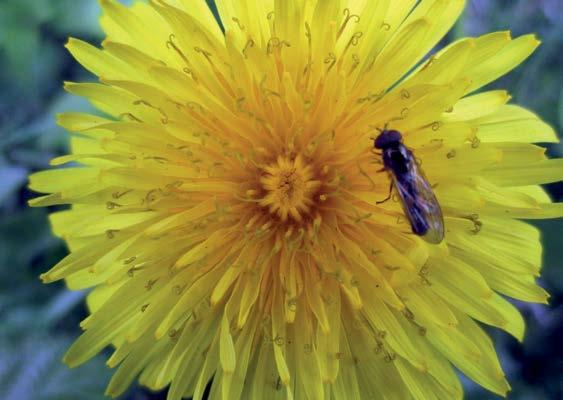
Useful flowers and herbs
• Nettles
• Comfrey* (Symphytum x uplandicum)
• Parsley
• Queen Anne’s Lace (Daucus carota)
• Members of the daisy family e.g. Calendula (Asteraceae)
• Members of the carrot family (Umbelliferae)
• Poached egg plant* (Limnanthes douglassii)
• Teasel (Dipsacus fullonum)
* Introduced plants, but very useful in the garden.
For further information on native wildflowers, please see the ‘Wildflowers in South Armagh’ booklet, you can download this from the Ring of Gullion website.
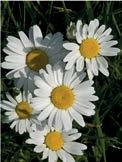

To encourage slug-munching frogs, build a pond, either using flexible pond liner in a hollow or repurpose an old baby bath, sandpit or similar. The recommended size is 30cm deep by 1m wide with sloping sides. If you are using a fixed container place large stones at one end to create a shallow area for the entry and exit of any small animals that might fall in. Allow the pond to fill with rainwater and populate naturally.
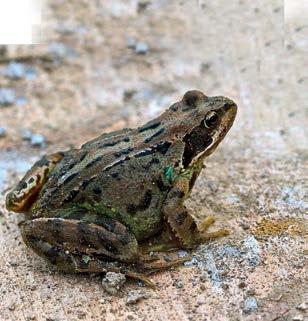
Hedgehogs are a sign that your garden is in balance with nature. They help control slugs and snails, and they are also beneficial for your compost heap as they turn it over in the hunt for food.
Hedgehogs can be encouraged into your garden by:
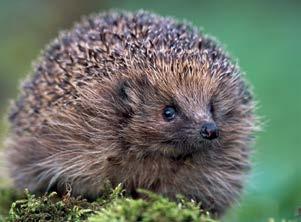
• Creating a hedgehog highway - a 15x15cm tunnel or hole in the bottom of solid fencing;
• Building a nest box under a hedge or in shrubbery;
• Leaving out supplementary food such as bacon rind or meat-based, gravy-free cat or dog food. Never leave out milk or bread as these are harmful to hedgehogs. A heavy bowl with fresh water is also helpful.
The war is never won, but with the right combination of defences and predators, you will be able to achieve a healthy and natural balance, so pests don’t gain the upper hand.
You can take the following steps to make life harder for unwanted pests and diseases:
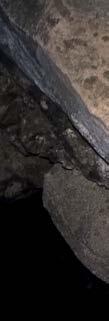
Created by using plenty of garden compost and applying regular mulches; results in strong plants, which can withstand pests and diseases.
Practice crop rotation. It prevents disease and pest build up in the soil.
Choose disease-resistant varieties and cull the weak. Weak plants can provide a breeding ground.
Plant lots of different crops, so it’s harder for insects to zone-in on their favourite.
Deploy physical slug and snail deterrents, such as:
Pieces of gorse, broken-up egg shell or hair.
You can also buy: Slugless: an organic spiky straw which also acts as a mulch.
Flexi copper tape: good for pots as slugs won’t crawl over copper.
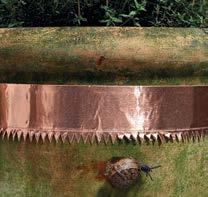
Drape dead seaweed around plants. It acts as fertiliser and a slug deterrent.
Use seaweed or garlic sprays, which are useful pest deterrents because they make the plants unpalatable.
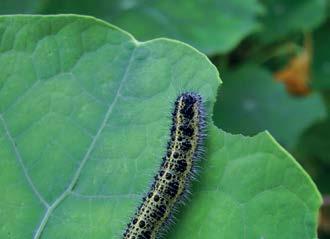
Water the base of the plants and earlier in the day.
Clean tools regularly; especially if working with infested plants, to prevent the spread of disease and


Deploy physical barriers to deter flying insects. Insect netting, mesh and horticultural fleece, draped over crops with the edges buried into the soil and weighed down at regular intervals, prevents flying insects from laying eggs.
Crush one full bulb of garlic and boil in 1L of water for five minutes. Cool and strain the liquid, storing it in the fridge until needed. Dilute the solution using one tablespoon of garlic liquid per litre of water and spray plants and surrounding soil.
NB: Don’t use on any edible plant that you don’t want to taste of garlic.


